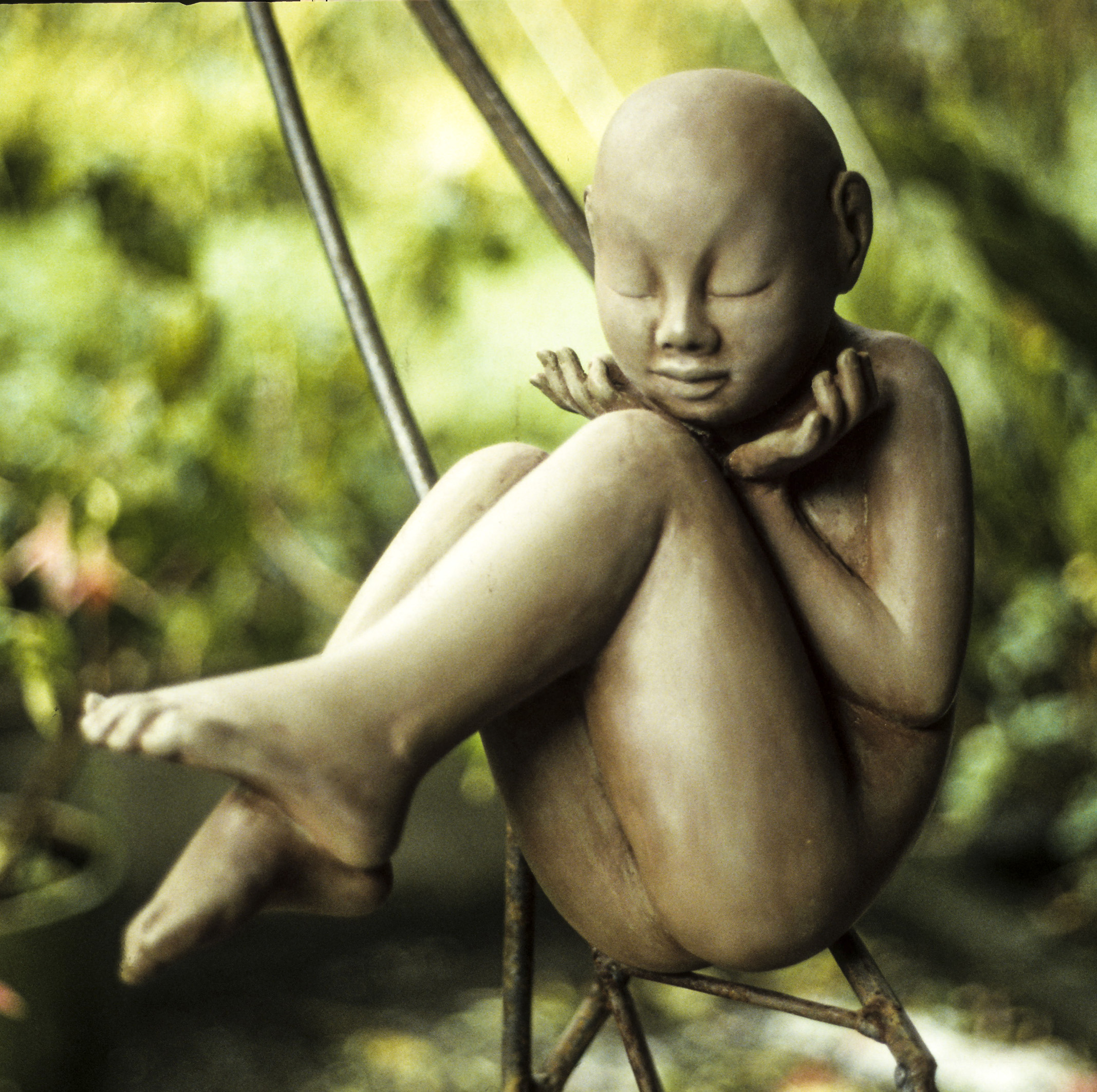Helena García Moreno
El útero cósmico y la esencia del niño Buda
Ceramic sculptures Period 1994-99
Art critic and presentation from Helena García Moreno.
First solo exhibition. “La Chuquiragua” Gallery 1997.
Quito, Ecuador.
The Art of Helena Garcia M.
By Julio Pazos Barrera
1997
Light approaches matter and begins its germination of forms. Suddenly and due to mysterious
reasons, it creates shadows, whimsical redoubts of shadows. The eyes glimpse the creations and
then turn them into loving feelings of tenderness, serenity and joy. Helena García is the promoter of
this communication act. She described and designed each of the “ceramic events”. Her hands
obeyed her orders, we don’t know with how much compliance, with how much rebellion or
effective precision. The relationship between the hands and the impetus of the author is always
secret.
In the half-light of the room, the ceramic objects are autonomous. Helena García is not physically
present. However, she is reborn and impregnated in the lines, the shadows, the surfaces of her
creations. It is a magical autonomy. Helena Garcia is a world projected in the exhibition rooms.
Her world moves with the silent gesture of dance. The undulating suggestions prevail. The ball of
the fetus extends outward in placid waves. All expressive processes manifest an inward and outward
direction, as if the concentrated bud of life slowly turned into petals and leaves.
Women’s bodies, children’s heads, half-open eyelids, vegetable wrappings are presented in constant
and harmonic fluctuation. The density of the clay disappears, and in its place the tactile experience
grows. The observers feel the attraction of the objects and for an instant they want to touch them.
Helena Garcia prefers raw and earthy colors. Excellent preference, because in this way her creations
are inserted in the general cycle of life, based on earth and water. These colors also evoke, through
their opacity, the silence of germination.
Helena García´s art expresses the reunion of the self. The relationship between children and
blooming buds can be understood as a representation of the multiple layers that make up the being.
In truth, when the artist goes to meet his or her essence, they lift concepts, one by one, and remove
feelings, until the core is reached. Those children that sprout between the leaves are the metaphor
of the aforementioned process.
But, also, Helena García’s creations are the result of feminine sensitivity, transparency and mystery
permeate her creations. Feminine psychology that comforts and gives meaning to existence.
Once again, the spirit of light flutters in art. Helena García’s mediation makes possible the moving
rendezvous with lines, shadows, surfaces. It is the sway stopped in moments of calm and depth.
English translation: Nahir Márquez
“The Cosmic Womb and the Essence of the Child Buddha”
A Critical-Poetic Analysis of the Artwork of Helena García Moreno
By: Gabriela Ponce Guevara.
From Bitácorazul, Quito, November 2025
In the flow of the Andes, where winds pass through bodies and origins, the work of
Helena presents itself as a return to the primordial clay, to the ancestral vessel that contains the
mystery of the world. From the mountains that maque up the Andes, her land of origin, the
mestizo memory, the language of silence that holds the echo of ancestors, a voice emerges that
remakes the gesture of molding, emptying, and refilling.
She works from her mestizo-woman who carries warm clay in her hand, reuses the
wound and transforms it into a form that breathes. In that transformation, her phrase is revealed:
“I am grateful for the wound, because from it empathy is born; I leave the victim behind and shine in thescar.” That phrase is a mantra, a rite of passage, a prayer of self-knowledge that filters into every crevice of the material she shapes.
When Helena shapes the clay, she does not just sculpt a form: she summons a cosmic womb,
that space prior to being, to name, to image. That womb spread throug everything—”it
permeates everything, it goes beyond being”—and opens like the vessel that contains the seed, the child Buddha, the essence that has its eyes closed and waits to awaken. In the piece, we see
birth in reverse: the vessel opens inward, the wound becomes prayer, the void becomes fullness.
In her Andean narrative, one feels the presence of Pachamama, the whisper of the hummingbirds, the murmur of the rivers descending from the glaciers, from the mountains that open with the fullness of the body that presents and exposes itself. But one also perceives the mist of Europe, the foreign space that demands another language—and which Helena accepts, transcends, assumes. The mestizo duality is not a conflict but a dance: the root—the Andes— dialogues with the German horizon, the ceramics reveal fissures of migration, the sculpture evidences a transition. From this intersection, Helena articulates her vision: “natural creation to save you.” It is not a projection outward, but a rescue of the original material, of the clay that reproduces the body, the womb, the origin.
The work is, in this sense, liturgy. Every rough surface, every residual engobe, every
tool mark reveals the epistemology of art: it is about knowing not only what the vessel is, but what it contains: the silence before the song, the child Buddha as a creative seed sleeping within the clay. That seed—with closed eyes—waits for the artist’s hand to awaken it. And when it awakens, it is not to proclaim itself, but to whisper. The work does not shout, but inhabits. It opens its form like one who opens a healed wound, like one who recognizes that the wound was actually a door.
And so, in the exhibition “The Cosmic Womb and the Essence of the Child Buddha,” Helena’s work
does not arrive as an isolated object, but as a territory. A territory that is mountain and mud, that
is vessel and body, that is woman and universe. And that universe demands not only the gaze of the
audience, but also their breath, their heartbeat, their silence.
When the viewer contemplates one of her works, they feel that they are before a
structure that does not retain matter, but makes it possible. The vessel is no longer a container,
but an explosion of origin. That structure that says: here was being, and before that, there was non-
being, the cosmic womb. And in that space, the artist plants the seed-child Buddha: closed eyes,
dormant wisdom, the promise of awakening.
This awakening is also political: the mestizo woman who creates plastic art in the
globalized world, who transfers her Andean narrative to another continent, who adapts without losing her roots, does so from empathy, from wounding, and from brilliance. Her natural creation is not mere craft: it is an act of resistance, an act of memory, an act of devotion.
For all these reasons, Helena’s work emphasizes this double movement: inward (the womb, the vessel, the seed) and outward (migration, intercontinental dialogue, universality). Inviting the audience to bow before the work as before a ritual, as before an offering. May each piece be read not only as form, but as an echo of origin and a promise of rebirth.
And in the end, when the gaze turns away from the piece, may silence remain, may the heartbeat contained in the clay remain. May the child Buddha, inside the mud, find his own Buddha: the light that opens from the womb of matter, from the cosmological womb, from the woman- artist who returns to the origin to liberate it.

Childbirth
Polychrome ceramic
40 x 23 x 19 cm
Year 1995
Artist´s property
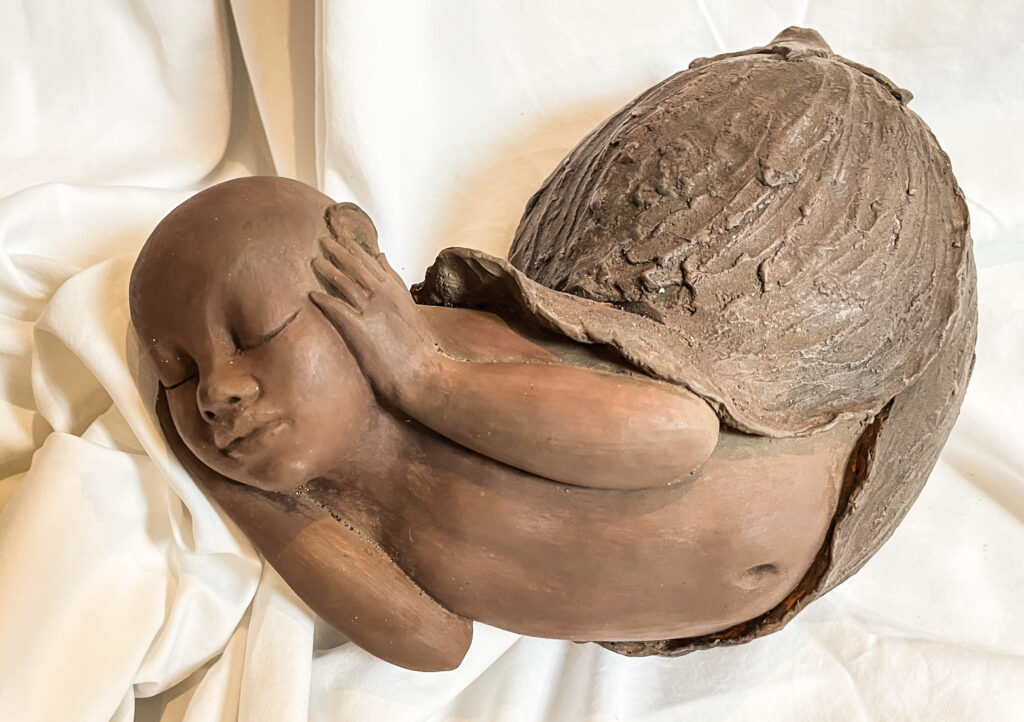
Child being born from a bud #1
Polychrome ceramic
36x20cm
Artist´s property
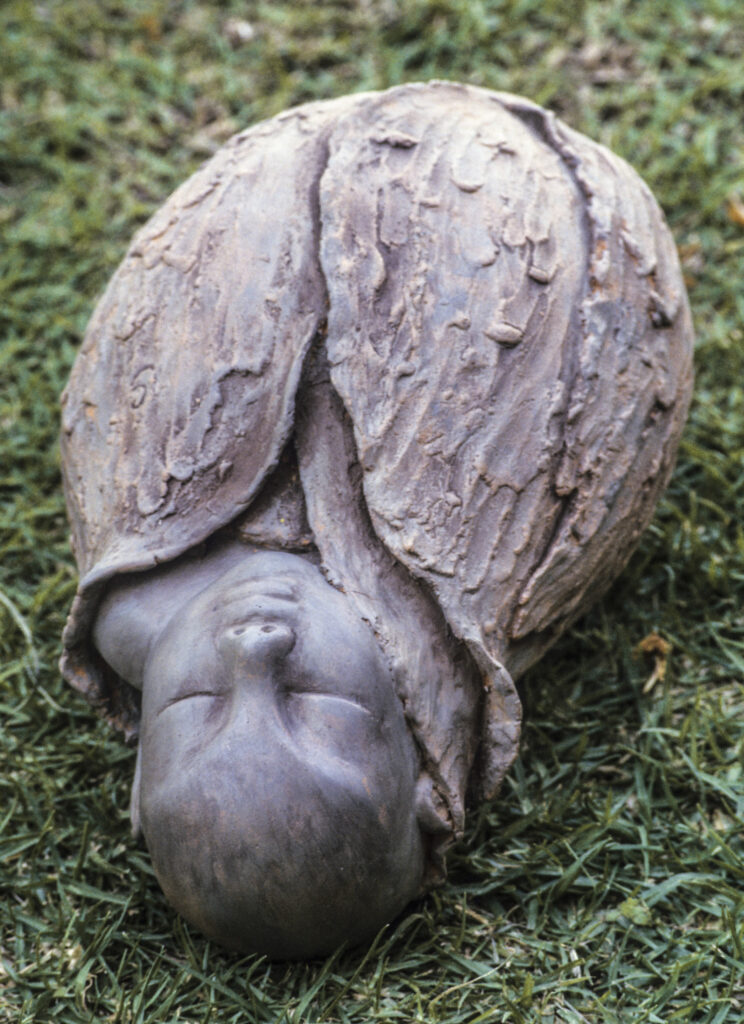
Child being born from a bud #2
Polychrome ceramic
30 x 20 cm
Artist´s property

Child sucking its thumb #1
Polychrome ceramic
36 x 17,5 cm
Artist´s property

Child sucking its thumb #2
Polychrome ceramic
28 x 12 cm
Artist´s property

Horizontal sprout child
Polychrome ceramic
24 x 11 cm
Artist´s property

Rising hands
Polychrome ceramic
22 x 15 cm
Private collection in the United States

Sideways sprout child
Polychrome ceramic
43 x 21 cm
Artist´s property

Child standing in sprout #1
Polychrome ceramic
48 x 26 cm
Artist´s property

Child standing in sprout #2
polychrome ceramic
20 x 10 cm
Artist´s property

Girl in fetal position
Polychrome ceramic
38 x 20 cm
Artist´s property
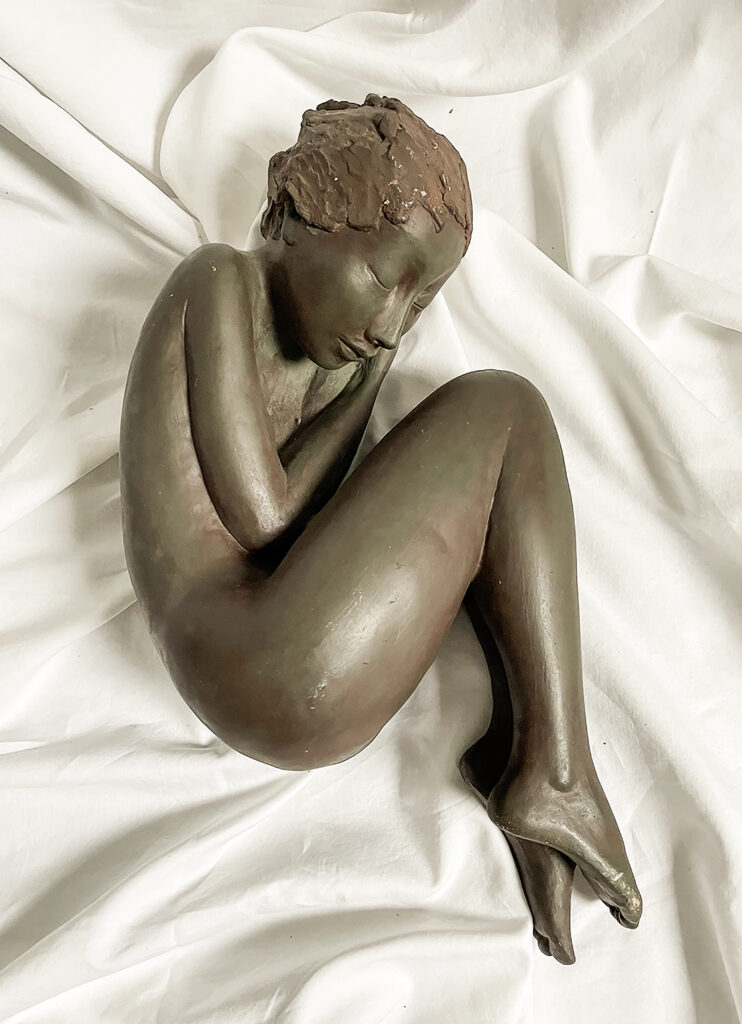
Girl made of bark in fetal position
Polychrome clay
38 x 20 cm
Artist’s property
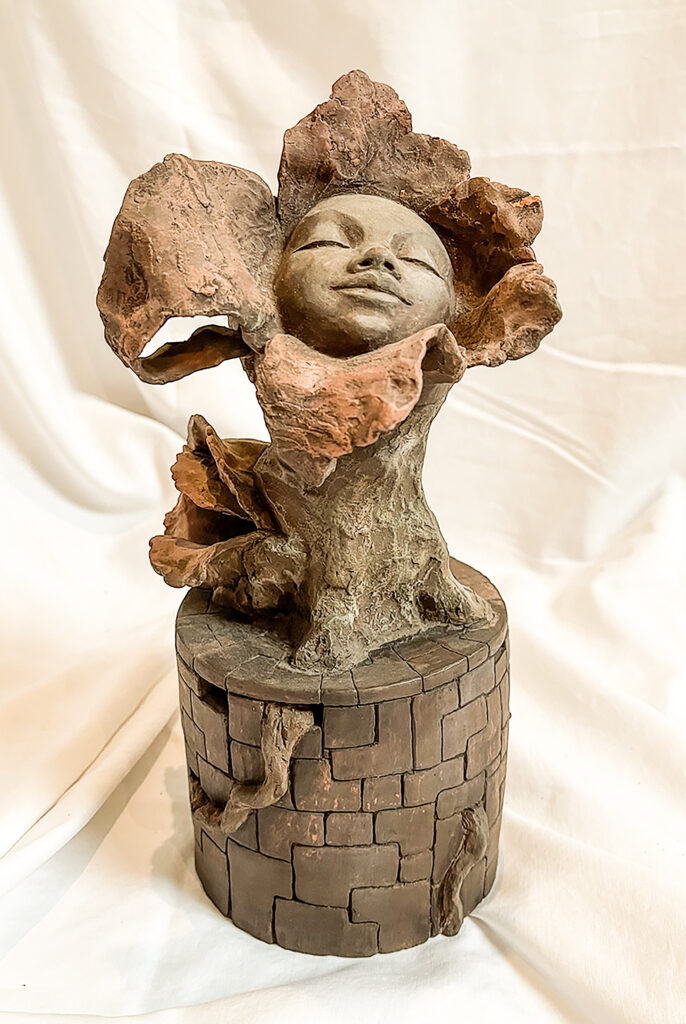
Flower girl on reliquary
Polychrome ceramic
22 x 12 cm
Artist´s property

Flower girl and two buds
Polychrome ceramic
30 x 19 cm
Artist´s property
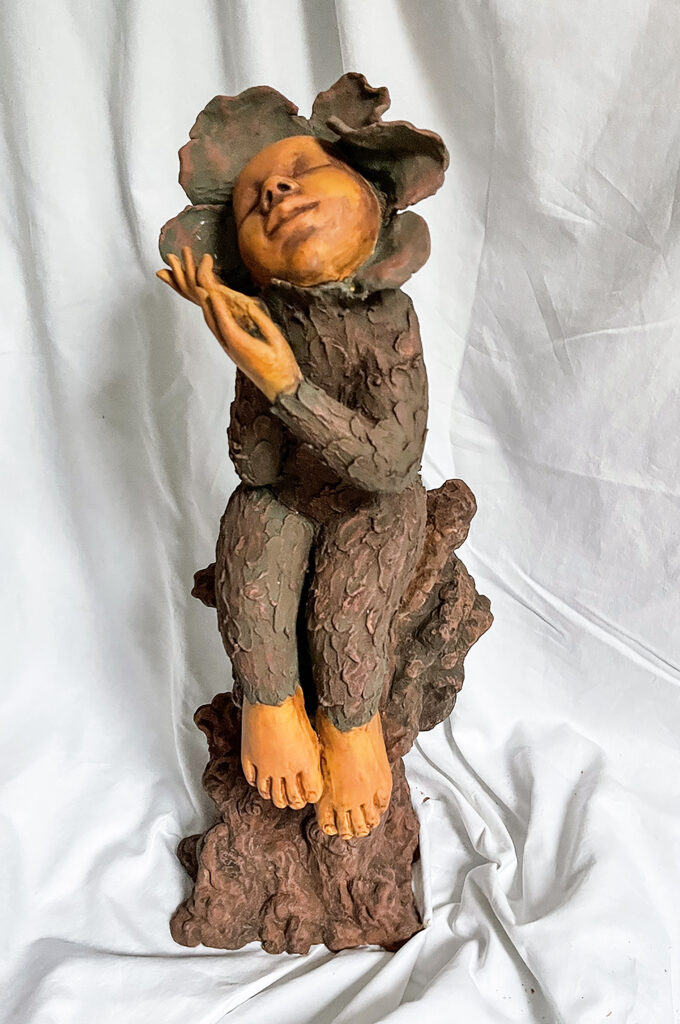
Flower girl sitting on a log
Polychrome ceramic
49 x 18 cm
Artist´s property
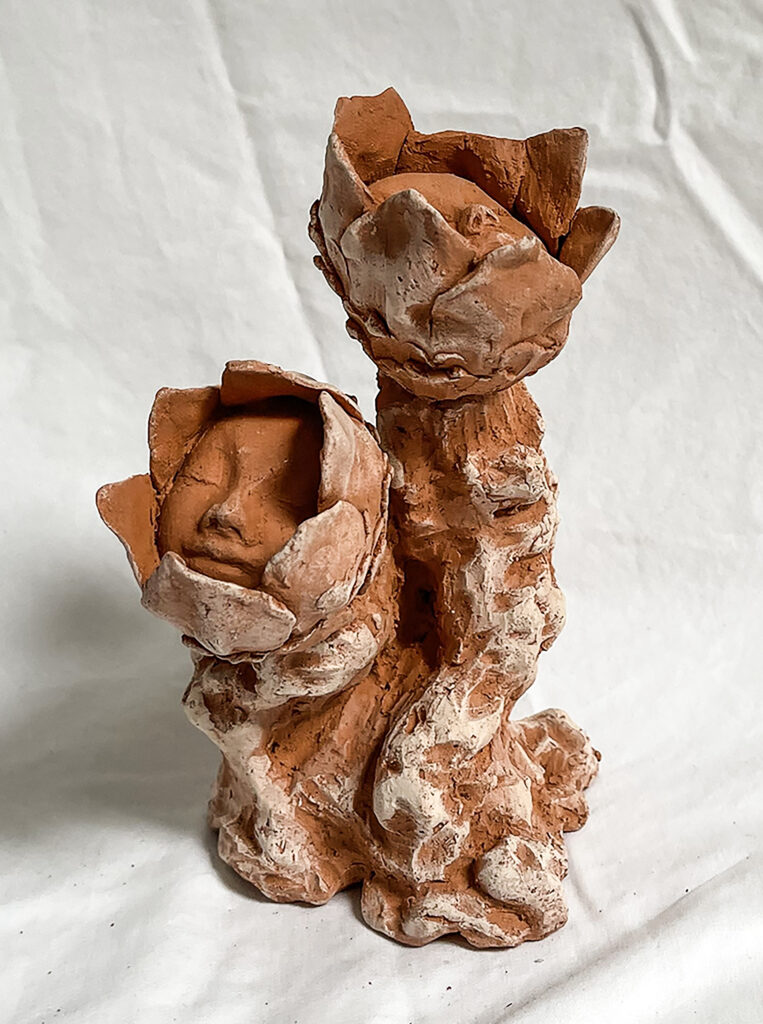
Two flower children
Red ceramic
17 x 9 cm
Artist´s property
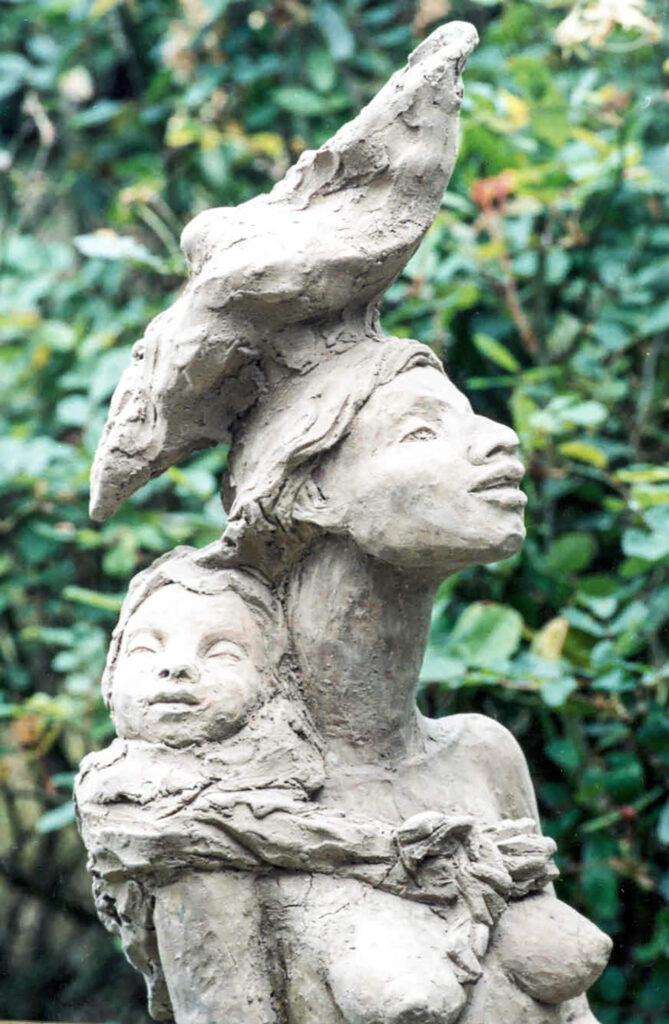
Woman and child
Polychrome ceramic
92 x 32 cm
Artist´s property

Mother and son
Polychrome ceramic
28 x 12,5 cm
Artist´s property

The siblings #1
Polychrome ceramic
23 x 15 cm
Artist´s property

Child sleeping on tree
Polychrome ceramic
23 x 15 cm
Private collection in Arlington, Virginia, U.S.A.

Child sleeping on a log
Polychrome ceramic
60 x 50 cm
Artist’s collection
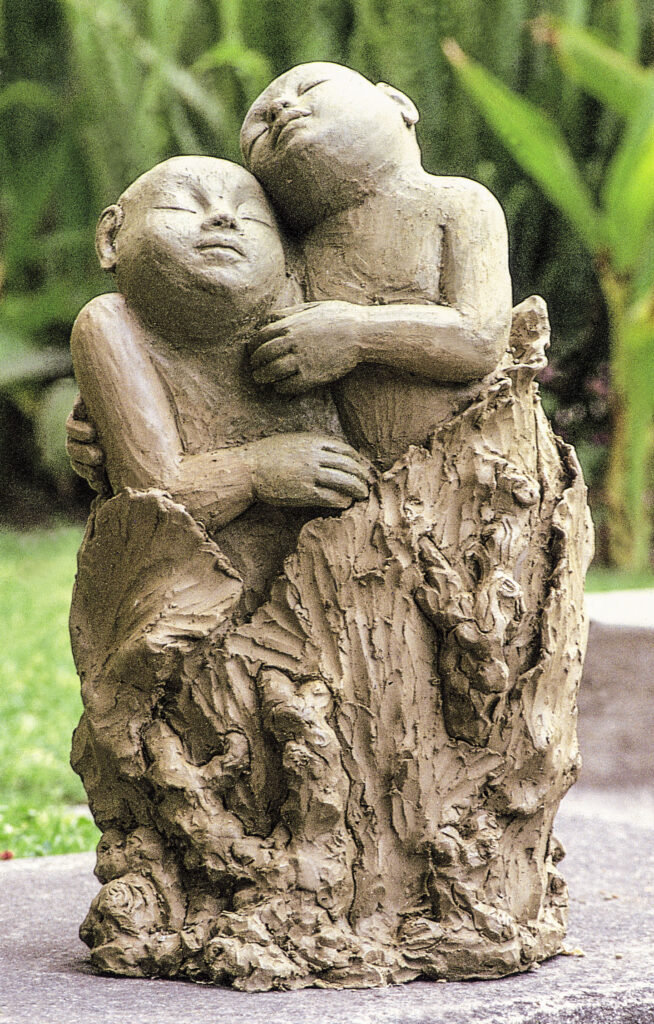
The twins
Polychrome ceramic
48 x 26 cm
Artist´s property

Woman Seated on Bark
Polychrome ceramic
50 x 22 cm
Private collection, United States
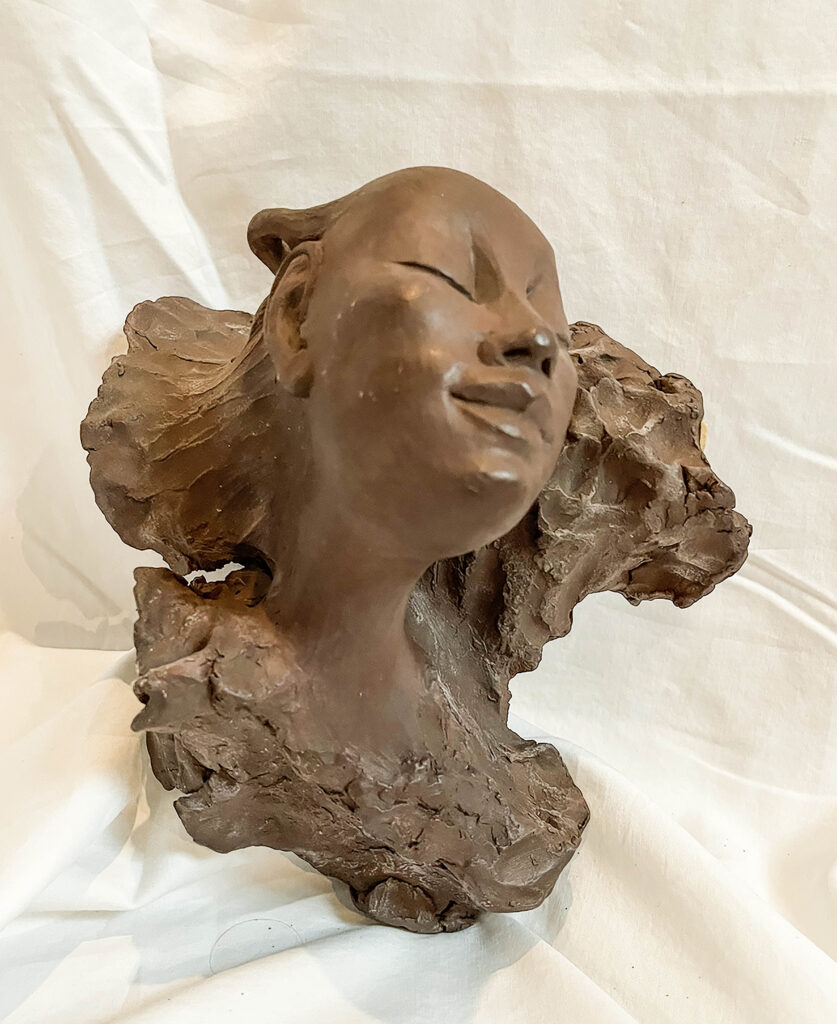
Woman’s face
Polychrome ceramic
23 x 12,5 cm
Artist´s property
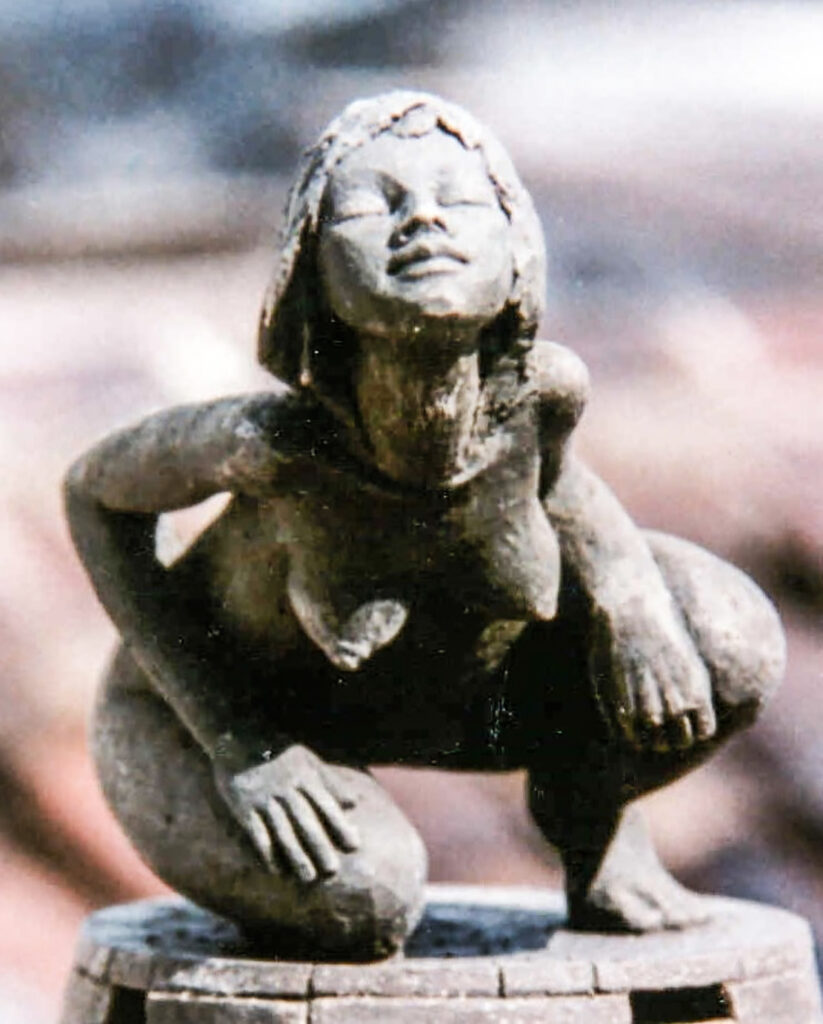
Meditative Woman
Polychrome ceramic
26 x 32 cm
Property of the artist

Girl
Polychrome ceramic
31 x 17 cm
Artist´s property
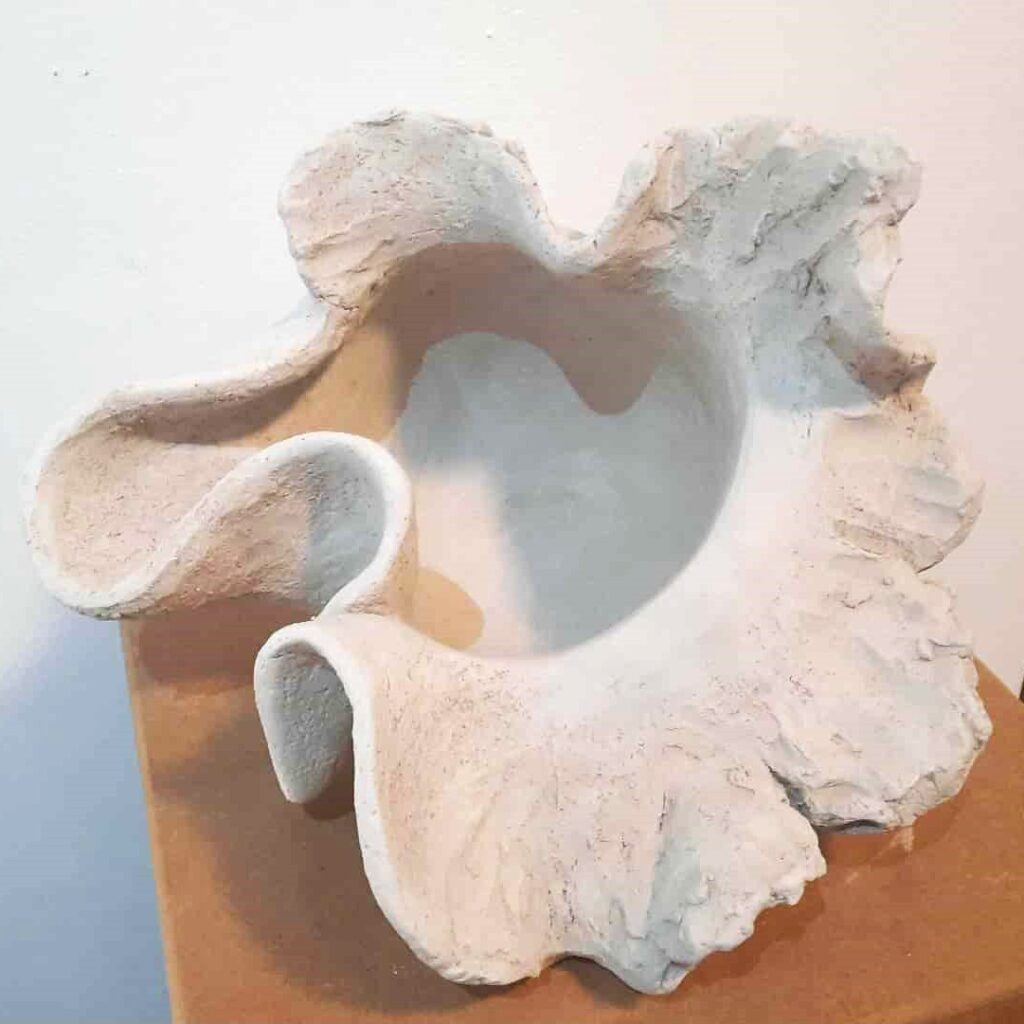
The Cosmic Womb
Modeled in clay
30 x 20 cm
Year 2022
Artist´s property
